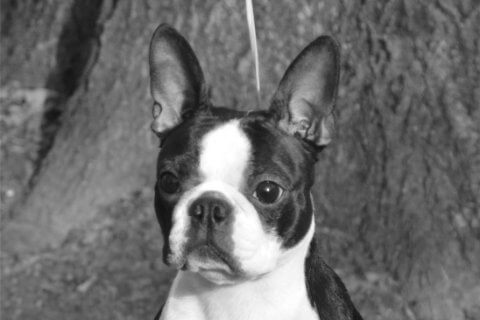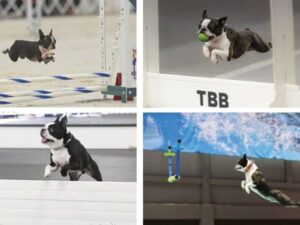
The Versatile Boston Terrier
Unleash the athletic excellence of versatile Boston Terriers in dog sports, from Agility to Obedience, Dock Diving to Barn Hunt. See more!

Home » Meet The Breeds » Boston Terrier
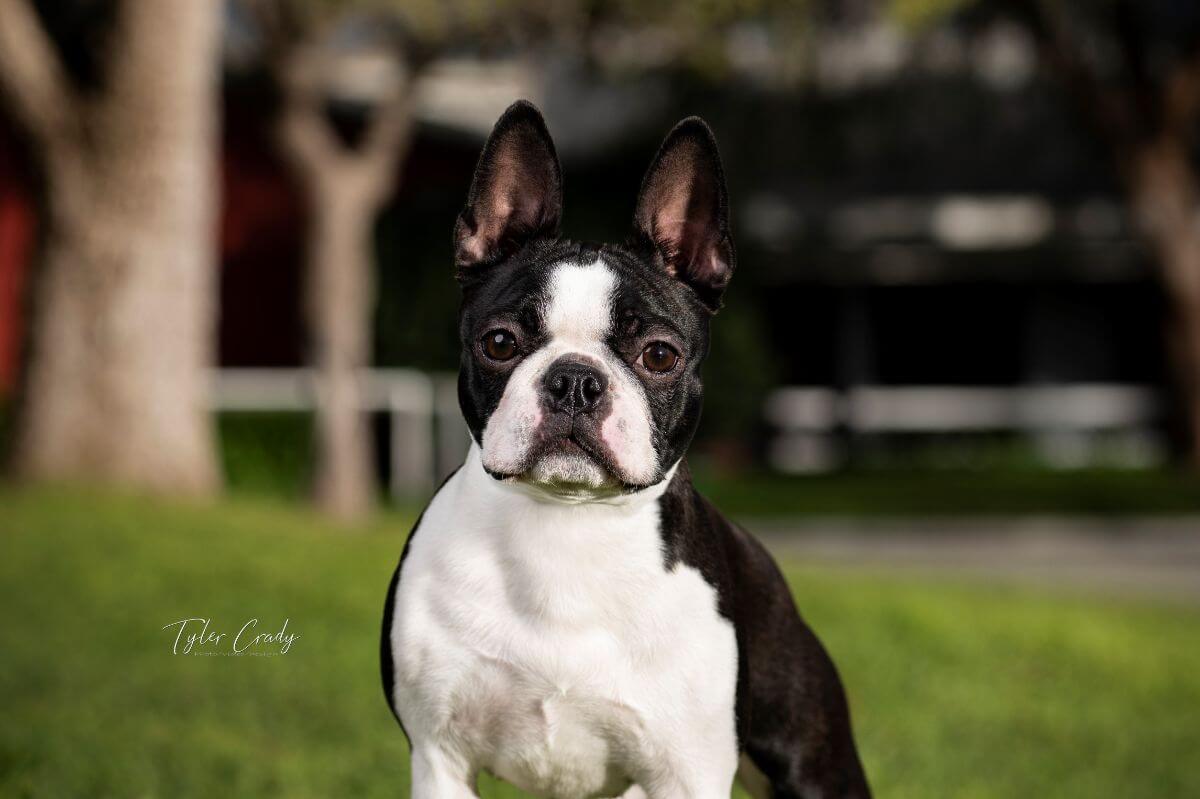
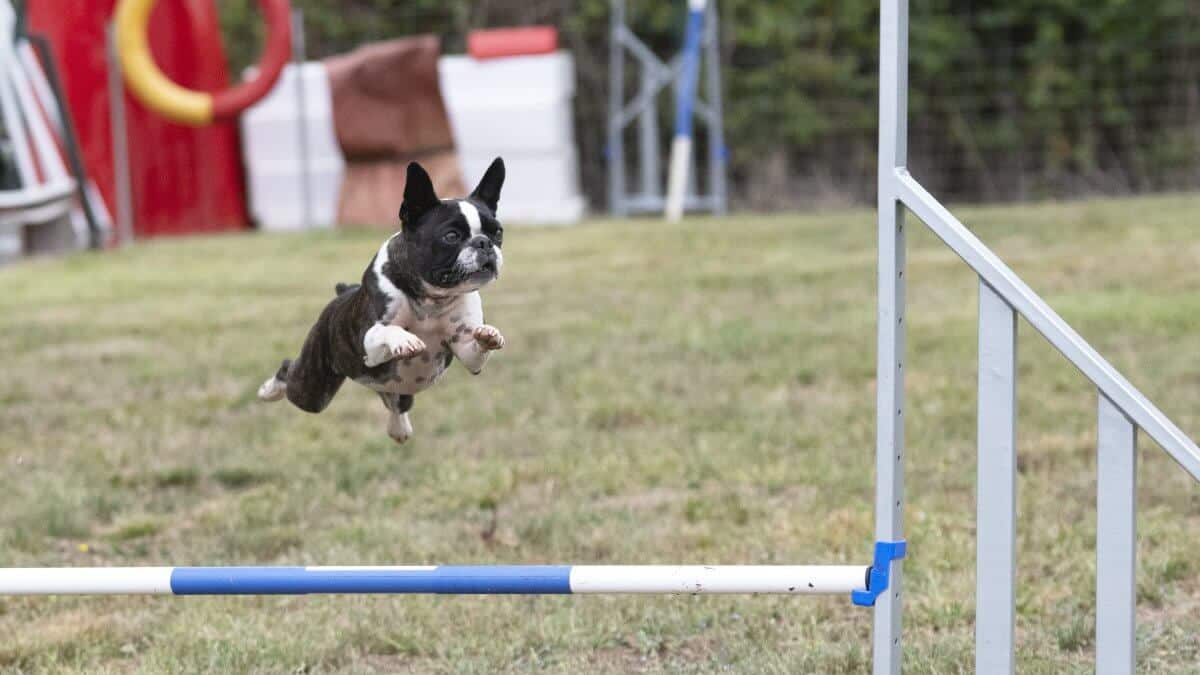
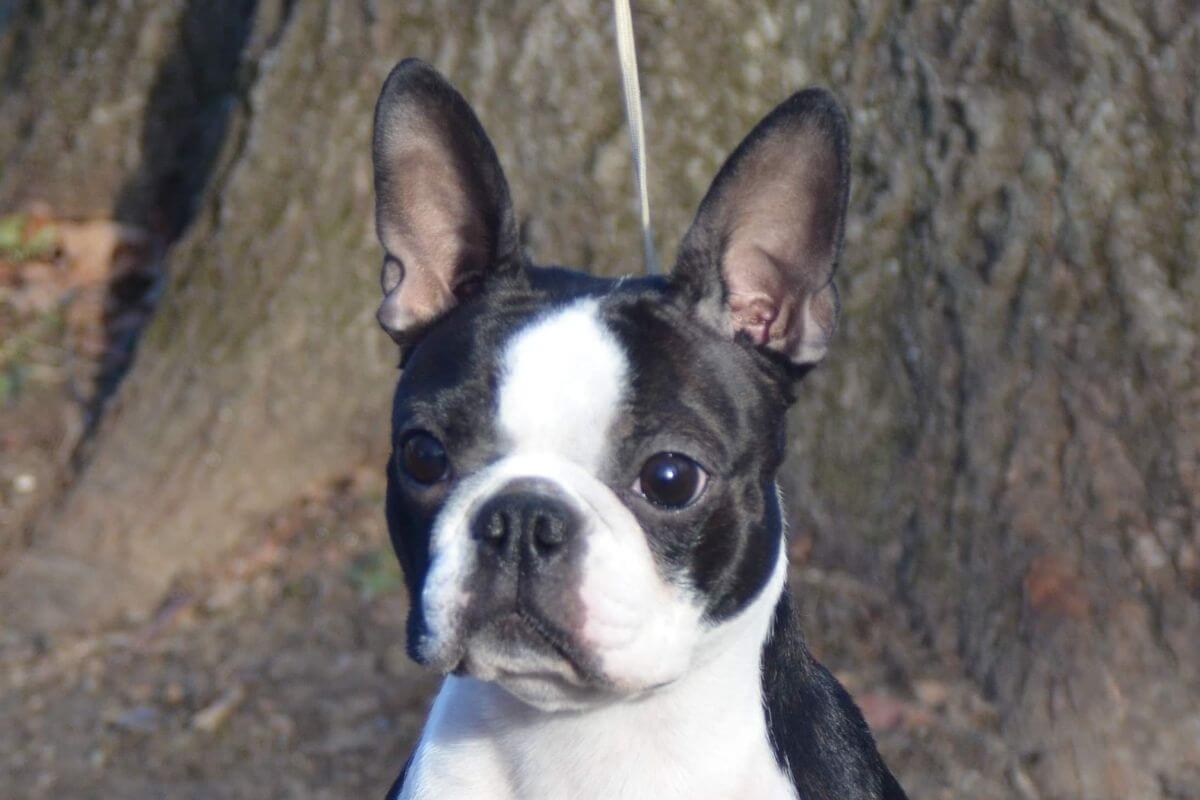
Boston Terrier Club of America
26/02/2025
An American original: The American Gentleman. A 10-25-pound people-loving, attentive, intelligent, enthusiastic, easy-care partner, making the journey of life more fun with every toss of the ball or side-tilt of the head. Excels at sharing the sofa.
Non-Sporting
10 – 12 inches
12 – 25 pounds
11 – 13 years
| Country of Origin | United States of America |
|---|---|
| Bred For | Companionship |
| Known For | The American Gentleman. Often having Tuxedo-like markings. The clean-cut, short-backed body of the Boston Terrier, coupled with the unique characteristics of his square head and jaw, and his striking markings, have resulted in a most dapper and charming American original, the Boston Terrier. |
| Popularity | High – As of 2023, the 23rd most popular breed per the AKC. |
| Temperament | The Boston Terrier is a friendly and lively dog. The breed has an excellent disposition and a high degree of intelligence, which makes the Boston Terrier an incomparable companion. |
| Activities | Boston Terriers are very active dogs that love to play. Boston Terriers can be a child’s rough and tumble buddy. They are highly intelligent and learn quickly. They excel in the Conformation show ring, as well as Obedience, Therapy work, and Agility. (Yes, Agility!) Many have achieved titles in relatively new AKC events such as Farm Dog certification, Canine Good Citizen, and Dock Diving. They love to interact with humans. |
The following short history of the Boston Terrier is excerpted from a small book, The Boston Terrier, written by J. Varnum Mott, M.D., combined with information from the archives of the Boston Terrier Club of America, Inc.
“The question is often asked, ‘How did the Boston Terrier originate?’ Briefly stated it may be said to have resulted from a cross between the English Bulldog and the white English Terrier, and then to have been considerably inbred. Incidental peculiarities of the first dogs used as sires are partly responsible for the present type.
“…Mr. Robert C. Hooper, of Boston imported a dog named Judge. This dog, which he purchased of Mr. William O’Brien of the same city, was undoubtedly imported from England. Judge, commonly known as Hooper’s Judge, was destined to be the ancestor of almost all the true modern Boston Terriers. He was a cross between an English Bulldog and a white English Terrier. He was a strongly built, high stationed dog of about thirty-two pounds weight. In color he was a dark brindle, with a white stripe in the face. His head was square and blocky, and he resembled the present Boston Terrier in that he had a nearly even mouth. Judge was bred to Burnett’s Gyp (or Kate). Gyp was a white bitch, owned by Mr. Edward Burnett, of Southboro, MA. She was of about twenty pounds weight, had a fine three-quarter tail, and was quite low stationed. She was of stocky build, showing considerable strength in her make-up. Her head was good, being short and blocky.
“…From Judge and Gyp descended Well’s Eph. This dog was of strong build, and like his dam was low stationed. His weight was about twenty-eight pounds. He was of dark brindle color, even white markings, and like Judge, had a nearly even mouth.
“…Eph was mated with Tobin’s Kate. This bitch was of small size, weighing only twenty pounds. She had a fairly short head, was of golden brindle color, and had a straight three-quarter tail.”
From these dogs can be traced the start of the breed, the Boston Terrier. On March 31, 1891, Charles Leland organized a first meeting of breeders. As an output of this meeting, on April 7, 1891, the first Boston Terrier Breed Standard was presented and soon after a stud register was established. This register consisted of 75 dogs whose ancestors could be traced back three generations.
Weight is divided by classes as follows: Under 15 pounds; 15 pounds and under 20 pounds; 20 pounds and not to exceed 25 pounds. The length of leg must balance with the length of body to give the Boston Terrier its striking square appearance.
The Boston Terrier is a sturdy dog and must not appear to be either spindly or coarse. The bone and muscle must be in proportion, as well as an enhancement to the dog’s weight and structure. Fault – Blocky or chunky in appearance.
Texture: The coat is short, smooth, bright, and fine in texture.
| Standard Color | |
|---|---|
| Brindle | ee |
| Seal | ee |
| Black | ee |
| Standard Marking | |
|---|---|
| White Markings | ee |
A Note About Color: Per the AKC Breed Standard, brindle, seal, or black with white markings. Brindle is preferred only if all other qualities are equal. Seal is defined as appearing black except it has a red cast when viewed in the sun or bright light.
The Boston Terrier shall not be solid black, solid brindle, or solid seal without required white markings. It also must not be any color not described in the Standard.
Disqualifications – Solid black, solid brindle, or solid seal without the required white markings; any color not described in the Standard, which includes fawn, blue, red, merle, dapper, black and tan, lilac, and any other color. The only colors are brindle, seal, and black with the required white markings. Period!
Per the AKC Breed Standard, the required markings for a Boston Terrier are: White muzzle band, white blaze between the eyes, white forechest. It is icing on the cake to have the desired markings: White muzzle band, even white blaze between the eyes and over the head, white collar, white forechest, white on part or whole of forelegs and hind legs below the hocks.
Note: A representative specimen should not be penalized for not possessing “Desired Markings.” A dog with a preponderance of white on the head or body must possess sufficient merit otherwise to counteract its deficiencies.
The tail is set on low, short, fine, and tapering, straight or screw, and must not be carried above the horizontal. (Note: The preferred tail does not exceed in length more than one-quarter the distance from set-on to hock.) Disqualification – Docked tail.
Consider your lifestyle. It’s best when your lifestyle matches the personality of the Boston. Boston Terriers are active, enthusiastic, and love daily activities with their humans. They are adaptable to different living arrangements but still desire daily, loving interactions with people. They are equally adept at running zoomies in the backyard, walking down city sidewalks, and stealing your favorite recliner.
Recommended Tests/CHIC Program Requirements:
The Orthopedic Foundation for Animals (OFA) works with the Boston Terrier Club of America and recommends basic health screening tests for all breeding stock. Dogs meeting these basic health screening requirements will be issued a Canine Health Information Center (CHIC) number. For CHIC certification, all results do not need to be normal, but they must all be in the public domain so that responsible breeders can make more informed breeding decisions.
For potential puppy buyers, CHIC certification is a good indicator that the breeder responsibly factors good health into their selection criteria. The breed-specific list below represents the basic health screening recommendations. It is not all encompassing. There may be other health screening tests appropriate for this breed. And, there may be other health concerns for which there is no commonly accepted screening protocol available.
Lifespan: 11- 13 years of age
Active, alert and Intelligent. Can be the class clown. Loves finding the squeaker in dog toys and any activity with his/her favorite people.
The Boston Terrier’s overall appearance is directly related to the quality of the diet. As owner, start with a carefully planned diet and regular exercise. Proper nutrition starts as a puppy to develop strong bone and well-conditioned muscles. Research and increase your own knowledge of canine nutrition, as there are ample resources available to aid us as owners to develop the best overall nutrition plan for our Boston Terriers (and ourselves).
Boston Terriers bond well with humans, having a desire to please. Combining this desire with the lively enthusiasm and high level of intelligence make the Boston Terrier an ideal candidate for being trained to learn new skills. Just start with a gentle approach. Praise, enthusiasm, and rewarding their efforts lead to success. (Pictured: Six-week-old puppies “manding.”) Manding is a concept used in humans and animals, a non-verbal manner of communicating their desire. Mands can be used for many things such as not jumping up, sitting nicely to greet people, sitting nicely at the vets, and many others.
Exercise is important to all dogs and Bostons are no exception. Daily exercise for the Boston Terrier should include walking, running, or chasing a ball. The Boston will be in proper condition with daily attention, daily exercise, and proper diet. Overweight dogs often have shorter lifespans.
| Energy Level | High |
|---|---|
| Exercise Requirements | Boston Terriers require a lot of time and attention. They are and have been bred to be companions. They will languish without human contact. They are not “outside” dogs! Boston Terriers are very active dogs that love to play. Without some basic training they may jump on you and maybe even give little nips while playing. |
The grooming of a Boston Terrier is minimal compared to many breeds. The Boston Terrier should be kept clean at all times and proper grooming always begins with a bath. Nail trimming should be done on a regular basis and introduced at an early age. Introduce the Boston to a grooming table early on and brush to benefit the skin and the coat. Bonus: The Boston Terrier looks forward to extra attention and care.
| Coat Type | Short, smooth, bright and fine in texture. |
|---|---|
| Grooming Requirements | Regular nail trimming, weekly bathing, routine ear cleaning, regular tooth brushing. |
The Boston Terrier is versatile being able to adapt to apartment life, a single family home, a country estate or a farm. The Boston is at home in any of these environments. Very easy to live with. Though not the best hunter, herder or security dog, the Boston Terrier thrives in winning the hearts and souls of their owners by being friendly, active, loyal and funny.
Some European countries discriminate against the brachycephalic breeds, saying they cannot live long, useful lives because they cannot breathe properly. The Boston Terrier Club of America rejects any such notion. Dogs bred to our AKC Breed Standard excel in all of the dog sports. We offer a consistent record of excellence and achievement as evidenced by the soundness and good health of a well-bred Boston Terrier.
In October 2024, 130 Boston Terriers earned various titles from the AKC. This is a typical number for every month of the year.
Boston Terriers are a fixture on the dog show circuit. Their good looks and formal appearance have earned them the title of “The American Gentleman.” Well-bred Bostons excel in the show ring, but they are capable of much more. In fact, they are standout performers in the myriad dog sports offered by the American Kennel Club.
Bostons participate in many sports. You will find them in the Obedience ring, Rally trials, Agility trials, Flyball, Fast CAT, Disc Dog, Dock Diving, Barn Hunt, and even Tracking events. A healthy, sound Boston is an athlete who can hold her head up among the best of them. A Boston can sail over the jumps and race around the ring, exuding joy at every turn.
The Boston Terrier Club of America supports Bostons in AKC Companion events by holding Obedience, Rally, and Agility trials at its annual Specialty.
The club also recognizes the achievements of our breed at its annual awards banquet, awarding certificates to the dogs in the Top 10 in Agility MACH competition and the Top 5 in Agility PACH competition.
The Boston Terrier is recognized by the world’s leading registries and kennel organizations, which categorize the breed into a specific Group based on its unique characteristics. This breed is recognized worldwide under the following Group designations:
| Organization | Group Designation |
|---|---|
| AKC (American Kennel Club) | Non-Sporting |
| UKC (United Kennel Club) | Companion Dog |
| CKC (Canadian Kennel Club) | Non-Sporting |
| ANKC (Australian National Kennel Council) | Non Sporting |
| RKC (The Royal Kennel Club) | Utility |
| FCI (Fédération Cynologique Internationale) | Group 9 – Companion and Toy Dogs; Section 11 – Small Molossian Dogs |
The ideal Boston Terrier is described by a Breed Standard that is approved by each of the world’s leading registries and kennel organizations. The Breed Standards for this breed may be found in the following links:
| Organization | Breed Standard |
|---|---|
| American Kennel Club | AKC Boston Terrier Breed Standard |
| United Kennel Club | UKC Boston Terrier Breed Standard |
| Canadian Kennel Club | CKC Boston Terrier Breed Standard |
| Australian National Kennel Council | ANKC Boston Terrier Breed Standard |
| The Royal Kennel Club | RKC Boston Terrier Breed Standard |
| Fédération Cynologique Internationale | FCI Boston Terrier Breed Standard |
Boston Terrier Club of America
A list of affiliate clubs can be found at:
https://bostonterrierclubofamerica.org/btca-affiliate-clubs/
The Boston Terrier Club of America has a Rescue Committee. The BTCA Rescue Committee’s purpose is to aid rescued Boston Terriers through coordination with local organizations and volunteers, and rescue parents. Our main focus is to act as a central contact point for rescue organizations and prospective adopters through a referral system (similar to breeder referral) and networking with local contacts. The Rescue Committee will also provide, with the board’s approval, financial aid based on need and according to the established guidelines. We want to ensure our national club’s support of Boston Terriers, regardless of pedigree, health condition, or age.
More information can be found at:
https://bostonterrierclubofamerica.org/boston-terrier-rescue/
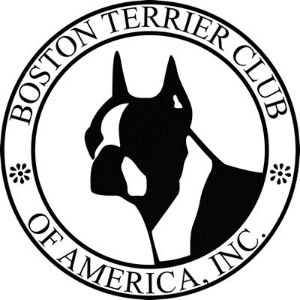
Being one of the first dog breed clubs, created in 1891, the Boston Terrier Club of American boasts over 500 members from all over the United States and around the world. We encourage and promote quality in the breeding of pure-bred Boston Terriers, and to do everything possible to bring their natural qualities to perfection, by urging members and breeders to accept the Breed Standard as the measure of excellence.
The BTCA is a member of the American Kennel Club, and is parent club to approximately 25 affiliate clubs around the country. Our quarterly newsletter the “Coast to Coast, is a wonderful publication filled with articles, photos, and useful information. Our club holds the National Specialty dog show in either April or May each year, holding this event in rotating regions across the US.
Our members actively participate with these lively and highly intelligent dogs in many events such as conformation, obedience, agility, and rally. Dedicated to responsible ownership, club participants support areas such as Breeder Referral, Breed Rescue, and a Health Committee whose paramount interest is to inform and educate the public and membership on important key issues facing the breed today.
We admire and protect our true “All-American” dog, as the Boston Terrier has an excellent disposition making him an incomparable companion.

Unleash the athletic excellence of versatile Boston Terriers in dog sports, from Agility to Obedience, Dock Diving to Barn Hunt. See more!
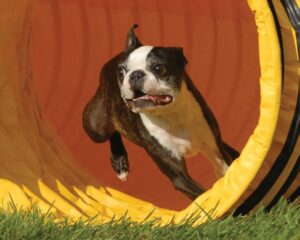
There is a fallacy that Boston Terrier dogs cannot compete in performance based sports and events, but they compete quite successfully.

Dolores Ferrero of Delphi Boston Terriers shares her breeding journey, focusing on health, temperament, and socializing well-bred puppies.

Lori Chapman of Patriot Farm discusses her passion for breeding Boston Terriers, focusing on health, expression, and agility.

Robin Gates is the breeder behind Sagacity Manchester Terriers. Read about the kennel’s beginnings, Boston Terriers puppies, and much more!
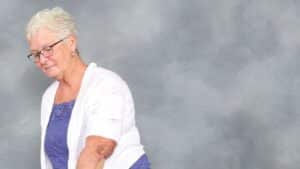
Janice Swofford is the breeder behind Infinity Stoneridge Kennel Boston Terries. Read about the kennel’s beginnings, puppies, and much more!

Lori Chapman is the breeder behind Patriot Boston Terriers. Read about the kennel’s beginnings, puppies, and much more!
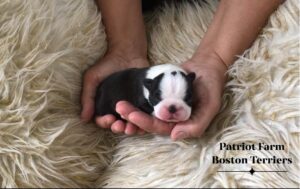
Lorraine Chapman is the breeder behind the Patriot Farm Boston Terriers. Read about the kennel’s beginnings, champions, puppies, and more!
The best way to ensure a long and happy relationship with a purebred dog is to purchase one from a responsible breeder. Not sure where to begin?
Contact the National Parent Club’s Breeder Referral Program, which is listed on the AKC Breeder Referral Contacts page.
